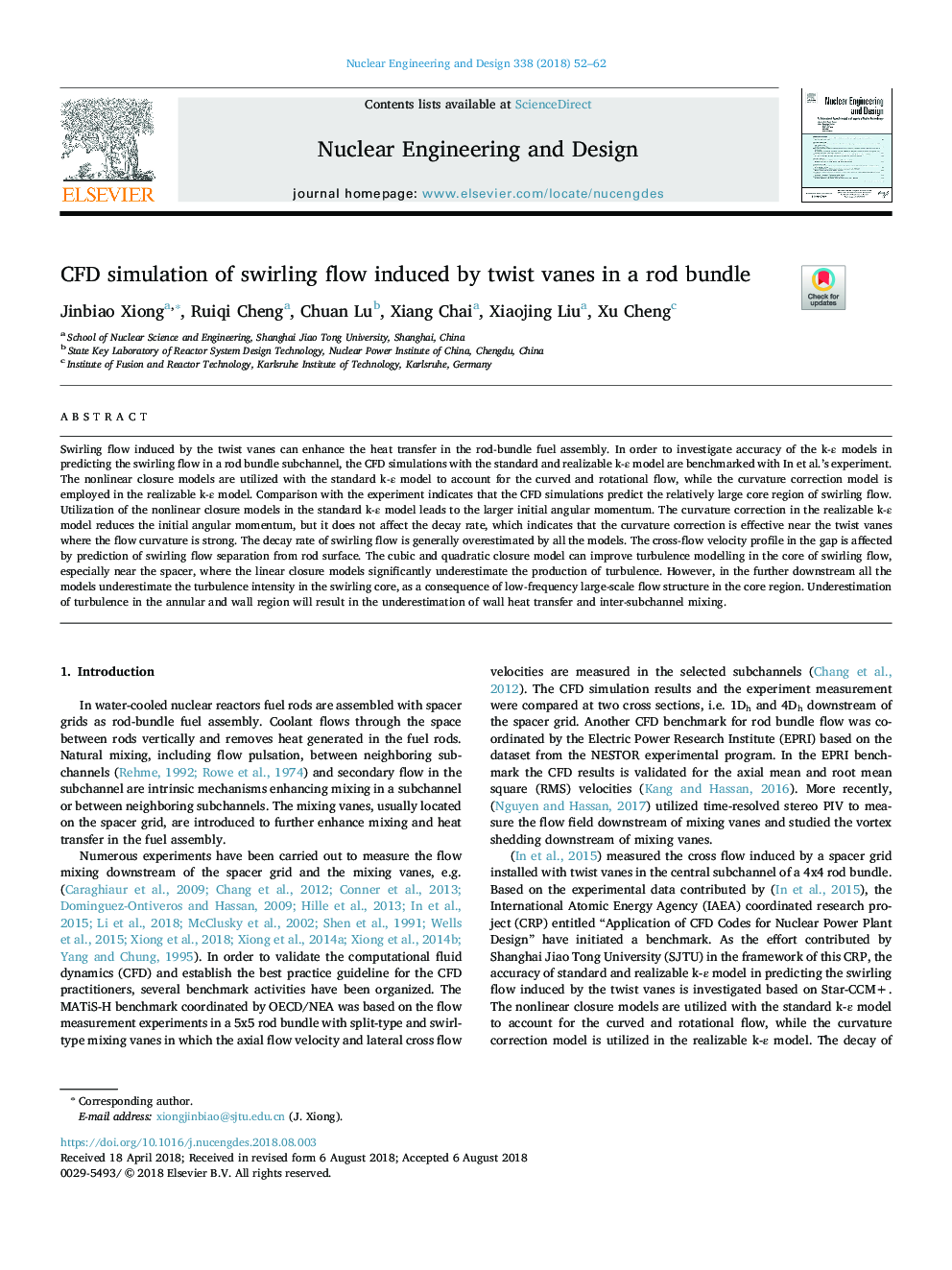| Article ID | Journal | Published Year | Pages | File Type |
|---|---|---|---|---|
| 6758519 | Nuclear Engineering and Design | 2018 | 11 Pages |
Abstract
Swirling flow induced by the twist vanes can enhance the heat transfer in the rod-bundle fuel assembly. In order to investigate accuracy of the k-ε models in predicting the swirling flow in a rod bundle subchannel, the CFD simulations with the standard and realizable k-ε model are benchmarked with In et al.'s experiment. The nonlinear closure models are utilized with the standard k-ε model to account for the curved and rotational flow, while the curvature correction model is employed in the realizable k-ε model. Comparison with the experiment indicates that the CFD simulations predict the relatively large core region of swirling flow. Utilization of the nonlinear closure models in the standard k-ε model leads to the larger initial angular momentum. The curvature correction in the realizable k-ε model reduces the initial angular momentum, but it does not affect the decay rate, which indicates that the curvature correction is effective near the twist vanes where the flow curvature is strong. The decay rate of swirling flow is generally overestimated by all the models. The cross-flow velocity profile in the gap is affected by prediction of swirling flow separation from rod surface. The cubic and quadratic closure model can improve turbulence modelling in the core of swirling flow, especially near the spacer, where the linear closure models significantly underestimate the production of turbulence. However, in the further downstream all the models underestimate the turbulence intensity in the swirling core, as a consequence of low-frequency large-scale flow structure in the core region. Underestimation of turbulence in the annular and wall region will result in the underestimation of wall heat transfer and inter-subchannel mixing.
Related Topics
Physical Sciences and Engineering
Energy
Energy Engineering and Power Technology
Authors
Jinbiao Xiong, Ruiqi Cheng, Chuan Lu, Xiang Chai, Xiaojing Liu, Xu Cheng,
